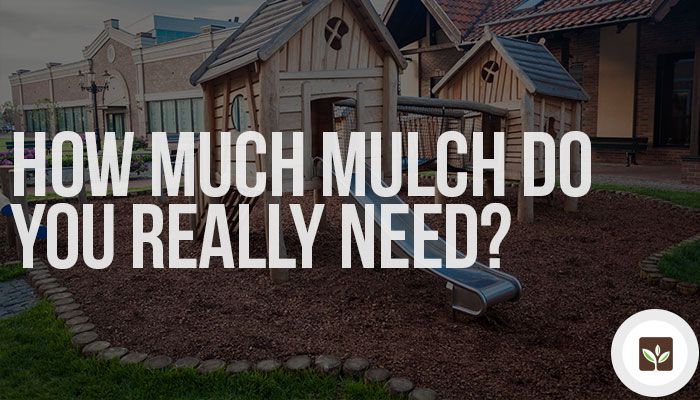It's common for inexperienced gardeners or beginner landscapers to order mulch for delivery without calculating how much they will really need. Buying too much mulch can be a waste of money, but it's even worse to use more mulch than you need as it can harm your plants. On the flip side, too little mulch will fail to protect your plants, deter weeds, or retain water.
Determining the right amount of mulch for your landscape can be a bit difficult as it depends on the gardening style and mulch type. This quick guide will give you a place to start.
General Rule for Mulch Thickness The proper thickness of mulch depends on the type of plant, land conditions, and -- most importantly -- the type of mulch you choose. The size of the mulch is important because it determines how much light and air can penetrate the mulch to the plants and root system. Small particles like double shredded bark clump together easily and allow very little light and air through. Large particles don't clump together.
If you choose a compost, shredded bark, or other type of fine mulch, you should only apply 2-3 inches around the plants. If you choose straw, pine needles, or chunk bark mulch, you can usually apply 3-4 inches.
Mulch and No-Till Gardening If you are using a no-till gardening method in your vegetable or flower garden, you will need to apply mulch more generously. This type of gardening is popular because it requires little labor and results in larger plants.
Once a flower or garden bed is established, the surface will not be disturbed or tilled again using this method. Instead, amendments like lime or compost are added to the top where they are pulled into the layer of subsoil by watering. With no-till gardening, mulch is used to suppress weeds and keep water trapped in the soil. A thick layer of mulch is necessary to keep the soil from getting dry, which restricts the flow of water and nutrients to the subsoil. When seedlings are first planted, the mulch may be just a few inches, but it will be added in layers as the plant grows. No-till garden beds can benefit from mulch layers up to 10 inches thick.
Calculating How Much Mulch You Need Before you order blown-in mulch installation, you should calculate how much mulch you need. Measure the width and length of each area in feet. Multiply these numbers to get the square footage of every area where you will install mulch. To determine how much mulch you should order, multiply the total square footage by the desired depth of mulch.
For example, if the area you want mulch has a square footage of 700 and you want 3 inches of mulch, multiply 700 by 3 to get 2,100.
Next, divide this number by 324. Every cubic yard of mulch covers 324 square feet with a 1" depth. Round the number to the nearest whole number to determine how many cubic yards of mulch you need. In this example, 2,100 divided by 324 is 6.48, or 6 to 7 cubic yards. We also find this SQUARE FEET TO CUBIC YARD CALCULATOR much easier (make sure to change feet to inches).
Additionally GetMulch.com provides a very useful mulch calculator that allows you to trace to areas of your property that need mulch.
